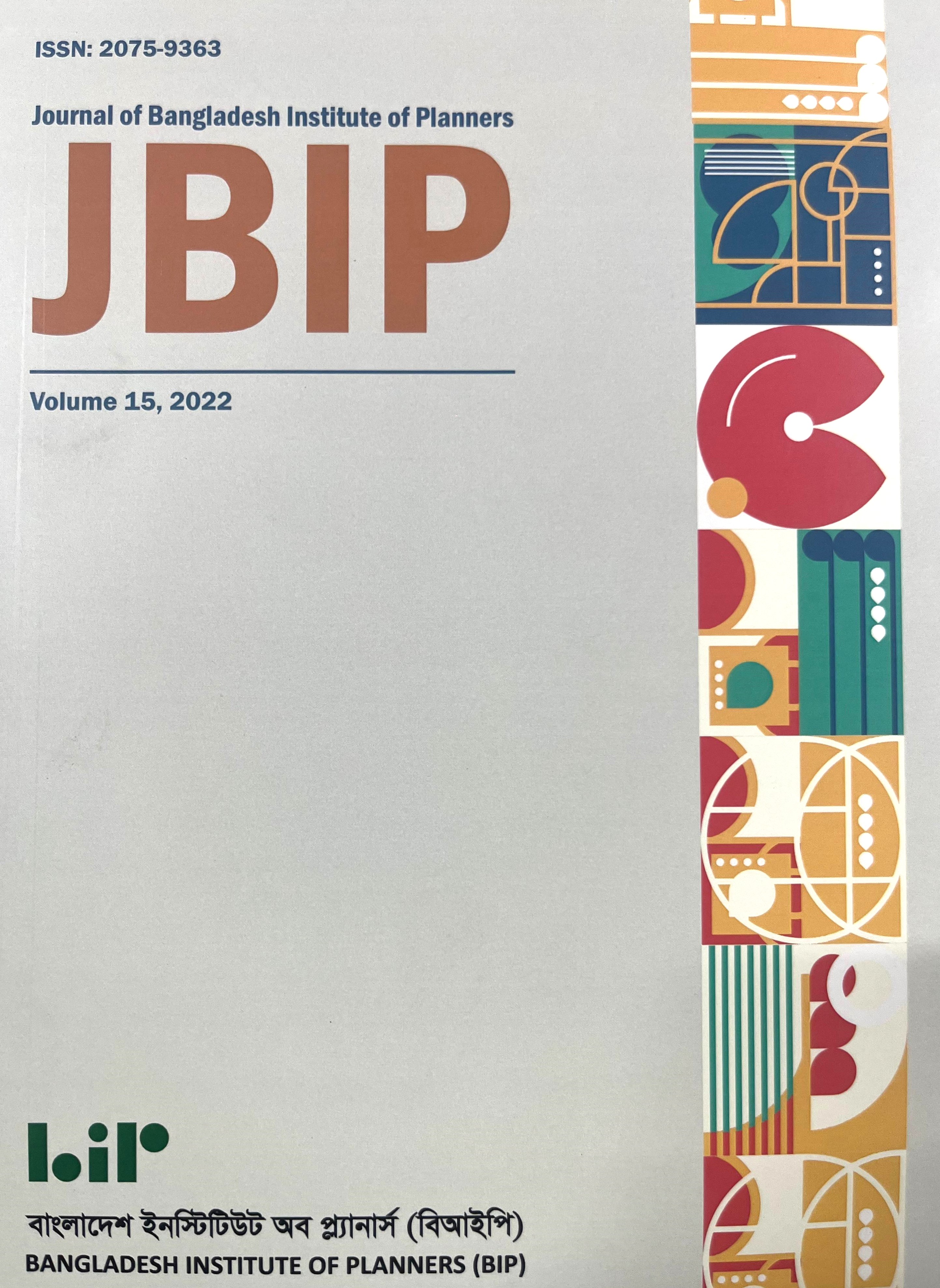River shifting trend and landcover change by River Padma over four decades (1979-2019) : A case study at Naria Upazila of Shariatpur District
DOI:
https://doi.org/10.3329/jbip.v15i1.77049Keywords:
Urban PlanningAbstract
River channel morphologies are defined by riverbank accretion and erosion and how they change landcover over time. This study has examined the change of natural landcover of Naria upazila by the River Padma through analyses of satellite images using ERDAS Imagine 2019 and ArcGIS 10.8 software. Landcover maps were generated to monitor morphological changes caused by Riverbank erosion. Imageries from 1979 to 2019 at tenyear intervals from Landsat's Operational Land Imager and Thermal Infrared Sensor (for 2019), Enhanced Thematic Mapper Plus (for 2009 and 1999), Thematic Mapper (for 1989) and Multispectral Scanner (for 1979) were used. After identification of shifting of river course using unsupervised and supervised image classifications, landcover maps at tenyear intervals were generated with eight land use classes viz., river, water channel, inland water, forest, vegetation, char land and settlements. During the period of 1979 to 1999, river channel area in Naria upazila increased from 29.42 km2 to 44.34 km2 and between 2009 and 2019, river area decreased from 37.51 to 30.4 km2. In the period of 1979 to 2019, river area decreased from 11% to 10% and settled areas increased from 6 to 7%. The most significant change was for forest cover, which went down from 33% to only 6%. The study highlights four-decades of the River Padma’s shifting trends and its effects on Naria upazila’s landcover by riverbank erosion for the first time. This research has the scope of incorporating into the long-term morphological changes in the river as supportive research for future initiatives to adapt plans and policies for the vulnerable communities’ life and livelihood.
JBIP, Vol. 15, 2022, pp. 25-41
Downloads
128
141




